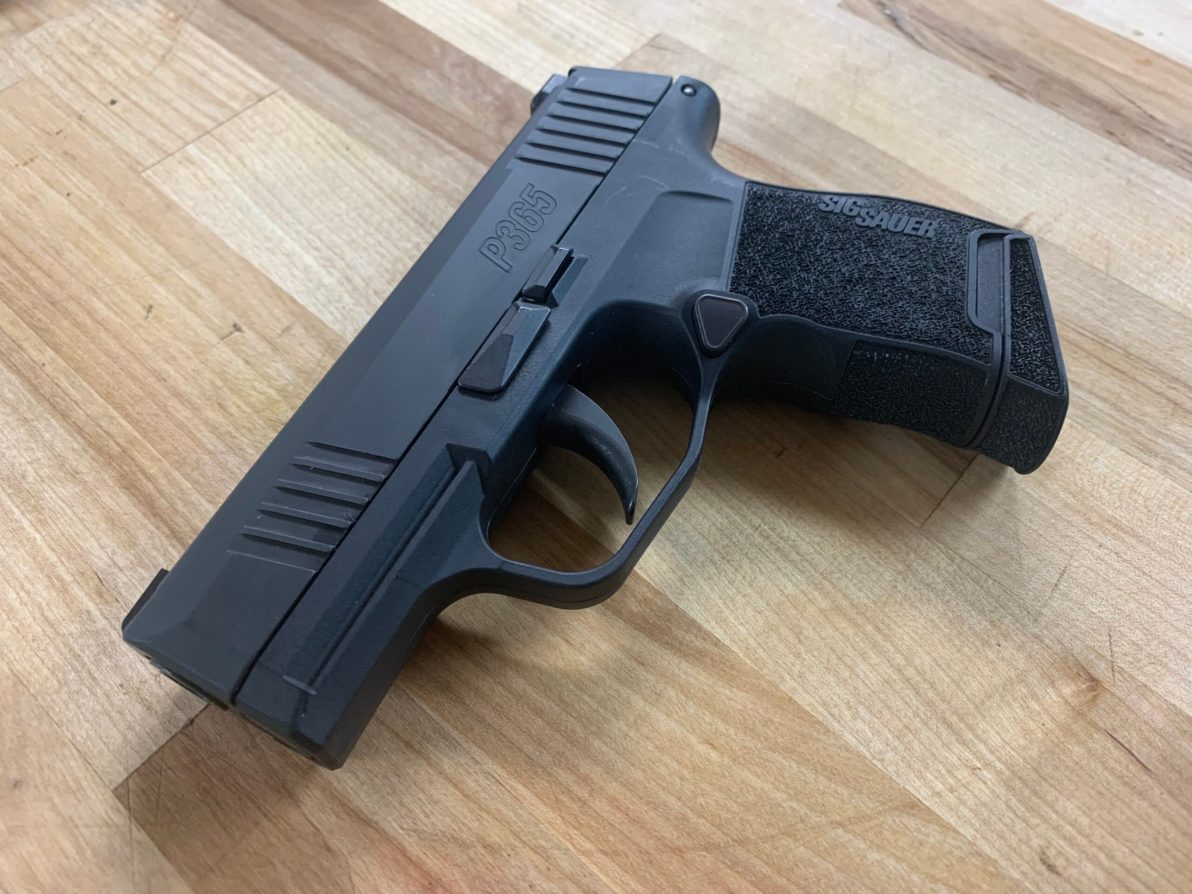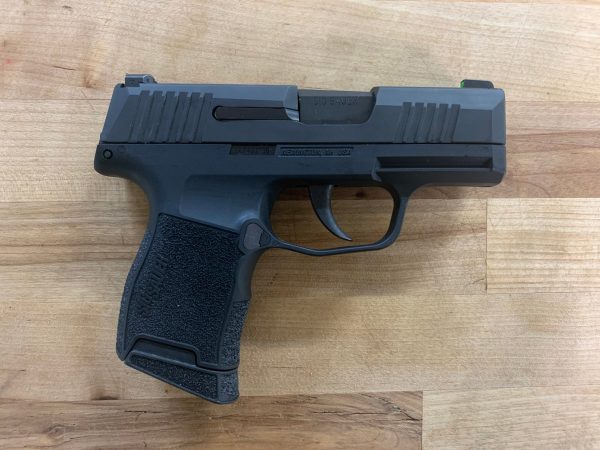We may earn revenue from the products available on this page and participate in affiliate programs. Learn More ›
The Sig Sauer P365 isn’t the first micro-compact EDC pistol to hit the market, but it’s one of the most notable. The P365 stands out not just for what it can do, but for the movement it spurred within the concealed-carry pistol market.
Before the Sig P365, the micro-compact market was owned by a number of single-stack 9mm pistols: micro 1911 9mm’s like the Sig 938 and Kimber Micro-9, as well as polymer-framed pistols from Kahr and Glock; a Kahr CW40 was my first carry pistol. Those are still great guns, but when the Sig P365 debuted, offering 10+1-round capacity in a double-stack magazine and a pistol that was essentially just as small as the single-stacks, the standards changed.
In any conversation about micro-compact EDC pistols now, the Sig P365 is included by default; but there’s more to the 365 than just capacity. There are numerous production variations of the Sig Sauer P365, and even more possible variants using interchangeable mods. Determining which one is the best choice for you requires an understanding of what the Sig P365 is, and what it brings to the table as a concealed-carry gun.
Sig Sauer P365 Specs
- Caliber: 9mm
- Capacity: 10+1 rounds
- Barrel: 3.1 inches, carbon steel
- Dimensions: 5.8 inches (L) x 4.3 inches (H) x 1.06 inches (W)
- Weight: 22 ounces (with empty magazine)
- Frame: Stainless steel
- Slide: Stainless steel
- Finish: Nitron, black
- Grip: Polymer module, stipple texture
- Sights: X-RAY3 three-dot, tritium
- Trigger: 6 pounds, 0 ounces (measured)
- External Safety: None
- Price: $499
Breaking Down the Sig Sauer P365
The Sig Sauer P365 is a semi-automatic striker-fired pistol that is similar in some ways to the larger P320 series. It’s a different gun and parts aren’t compatible with the Sig P320, but the influence is plain to see. Like the P320, the Sig P365 has a takedown lever to separate the slide and frame without pulling the trigger. The Sig P365 also has a removable fire control unit (FCU). It comes with two 10-round magazines: one that fits flush with the bottom of the grip, and one that has a slightly extended “pinky” baseplate that provides a bit more grip real estate.
Slide, Barrel, and Recoil Spring
The P365 has a stainless-steel Nitron-coated slide and a carbon-steel barrel. The top, front, and back corners of the slide are beveled to reduce the printing profile of the pistol and facilitate a snag-free draw. The slide has cocking serrations fore and aft, and dovetail-fit tritium three-dot day/night sights. The basic Sig P365 model doesn’t have an option for mounting optics, but other models do.
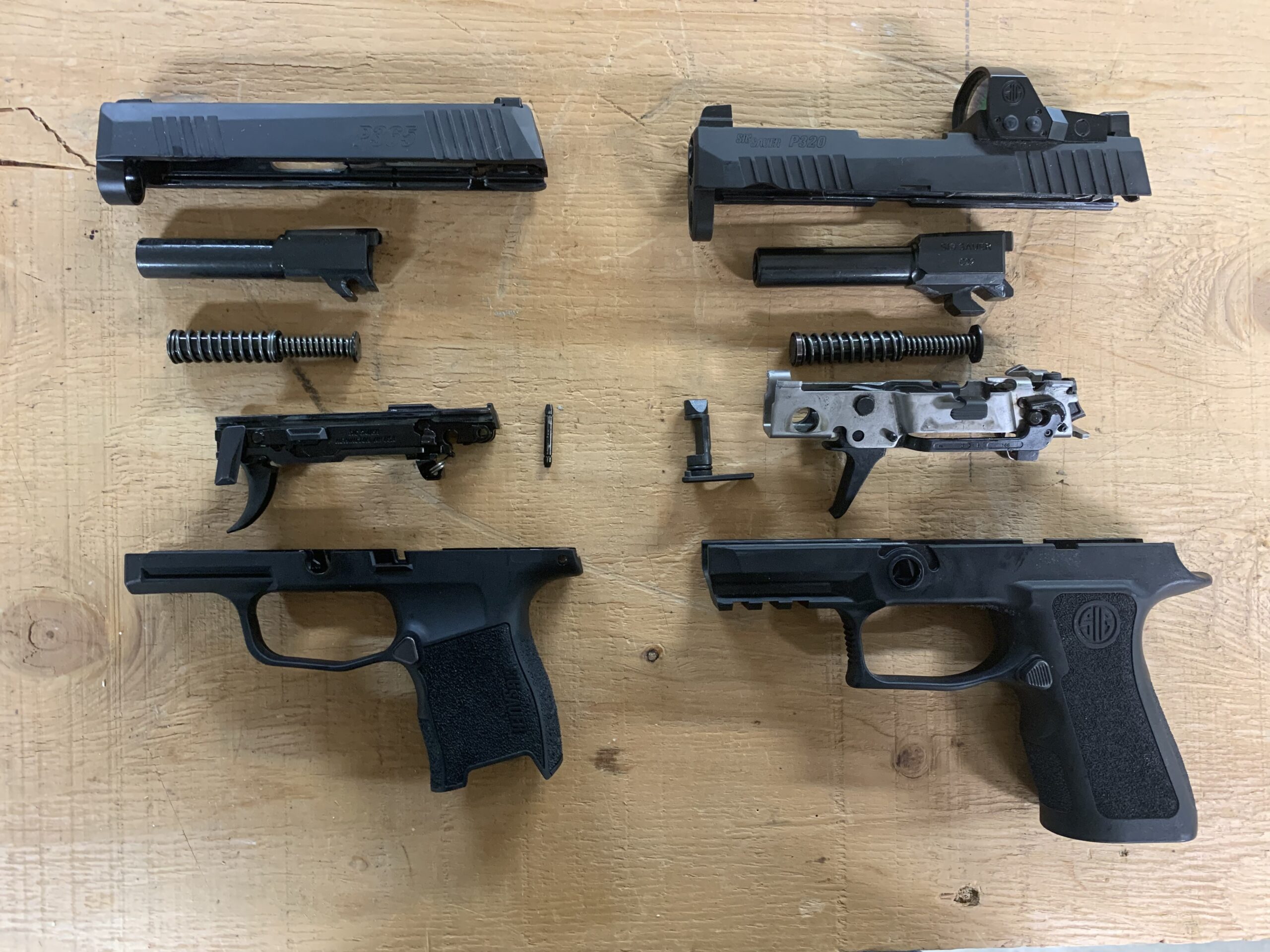
To remove the slide, lock it to the rear by engaging the slide stop, rotate the takedown lever clockwise, then slowly pull back and let the slide go forward until it’s free of the rails. The recoil spring and guide rod assembly look similar to what you’ll see on the P320 XCompact, as does the barrel; they’re just smaller. The Sig P365 has a robust external claw extractor and a small, fixed ejector that’s built into the frame.
The Lower Half of the Sig Sauer P365
The Sig P365 is distinct from the larger P320 series, but it’s clear that many of the P320 concepts have been massaged into the P365. The lower-half nomenclature of the P365 is a little different than most striker-fired pistols, because of its unique design.
Most polymer pistols have parts molded into and/or installed into the polymer frame—which displays the required serial number. The frame of the Sig P365 is stainless steel and is part of the removable FCU that bears the gun’s serial number. The frame/FCU of the P365 features continuous 3.5-inch slide rails on each side—the P320 has small slide rail tabs at each corner of the FCU. Because the serialized frame is part of the removable FCU, other customizable parts like the grip module are hassle-free to order and swap.
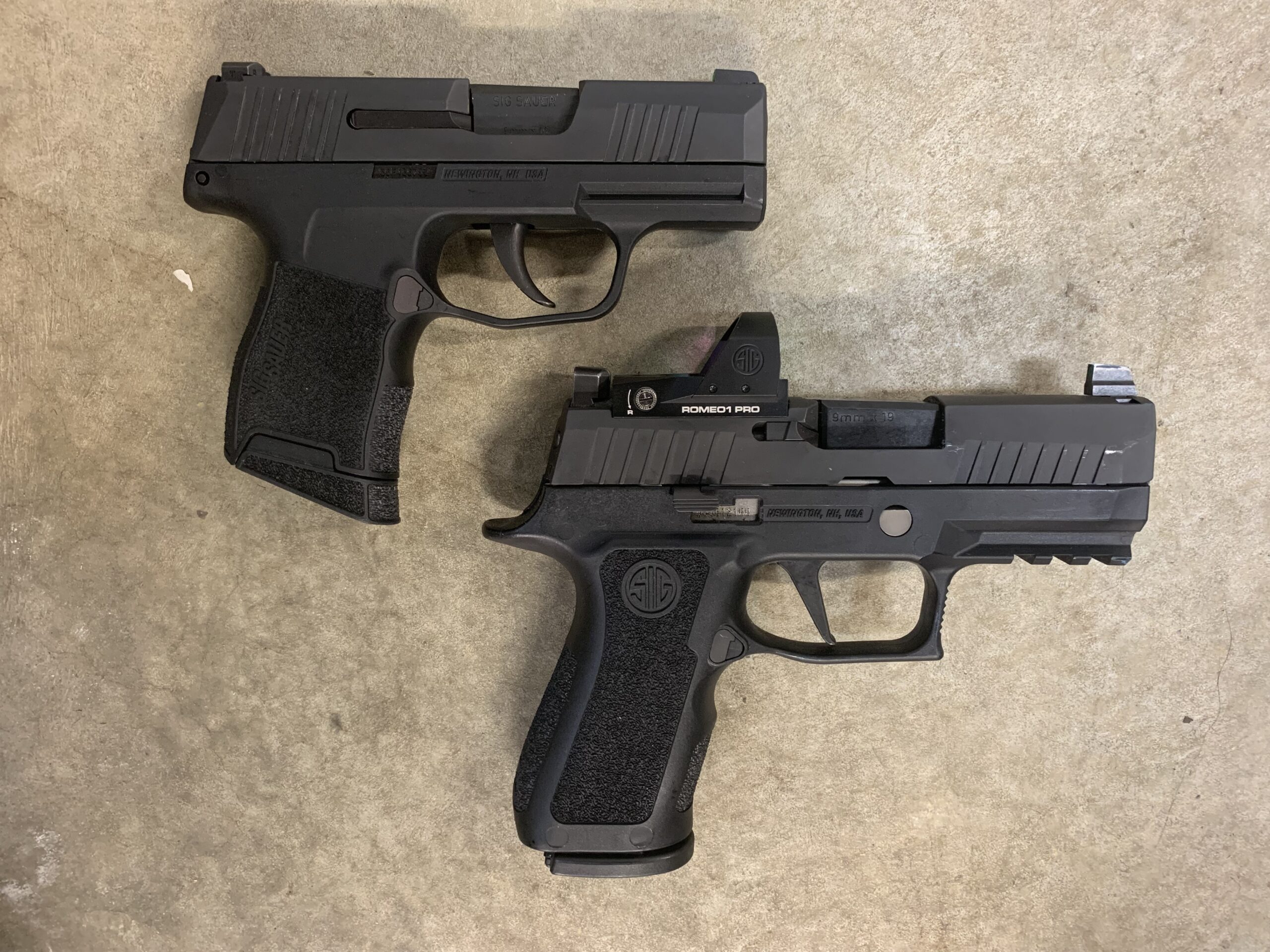
What we’d call the frame on most pistols is the grip module on the Sig P365; it’s all polymer and houses the reversible magazine catch button. The Sig P365’s grip has a relatively vertical angle that’s like the P320 line, but the grip shape is different on the P365’s. Outside the P365 series, only the Sig P322 shares this basic grip profile. The front, back, and sides of the grip have a laser-etched stipple pattern that provides great traction. There is an accessory rail forward of the trigger guard and, behind the trigger, both sides of the grip module are scalloped for a tight fit with the shooter’s hand.
The grip module is only long enough to rest my middle and ring fingers on when holding the gun, but with the large-baseplate magazine, there’s room for my pinky too. It’s easy to maintain a secure hold on the gun, and controls are easy to reach without breaking my grip.
What Makes the Sig P365 a Popular EDC Pistol?
As the Sig Sauer P365’s moniker hints, it’s a pistol that’s intended to be carried 365 days-per-year. For any gun to be a good everyday carry pistol, it needs to be comfortable and convenient to carry every day—many aren’t. The P365’s capacity is almost unbelievable when compared to similar-sized single-stacks. In overall dimensions, the pistol is almost identical in size to my Kimber Micro 9 1911. It’s slightly shorter in overall length but weighs just two ounces more. The grip is shorter from front to back on the P365, but it carries three more rounds of 9mm than the Kimber.
To make a stellar concealed-carry pistol, the pint-sized stature of the Sig P365 is a good start, and the double-digit capacity is great, but those things alone won’t keep a pistol relevant in today’s ultra-competitive field.
Modularity is one of the Sig P365’s greatest strengths, and it’s something that Sig Sauer has thrown their weight behind. Because of the simple design, users can buy a base pistol and eventually swap for upgraded grip modules, triggers, slides, and just about anything else. Sig has now filled in just about every imaginable niche for this little platform with a variety of additional P365 models like the P365 XMacro and the P365 XL Spectre Comp.
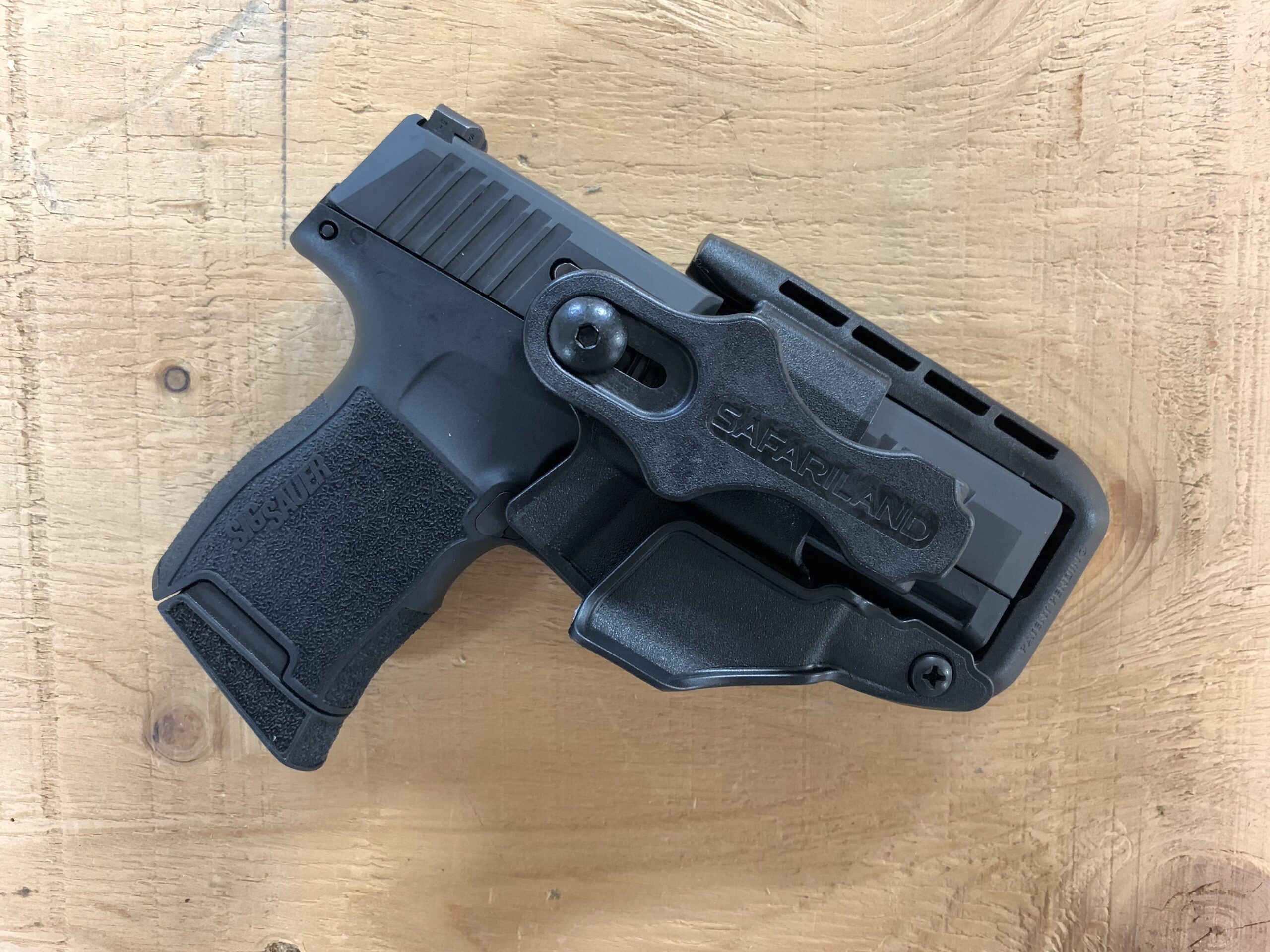
The Sig Sauer P365 on the Range
Micro-compact 9mm pistols can be like lightning in a bottle. They’re supposed to achieve a delicate balance of power, capacity, reliability, and small size. A tiny pistol needs to be manageable if it hopes to see success, and some of them aren’t. A micro 9mm that is pleasant to shoot casts a wide net over potential customers. One that feels like grabbing a hot cow fence when you touch it off probably won’t fare well.
I fired 500 rounds through the Sig Sauer P365 while testing, and I threw everything I had at the gun. I fired 115-, 124-, and 147-grain full metal jacket range ammo, a variety of 115-, 124-, 147-, and 150-grain hollow point defensive ammo, Black Hills 125-grain Honey Badger, and Federal Premium 147-grain Solid Core backcountry defense ammo.
The pistol functioned perfectly with every type of ammo I used.
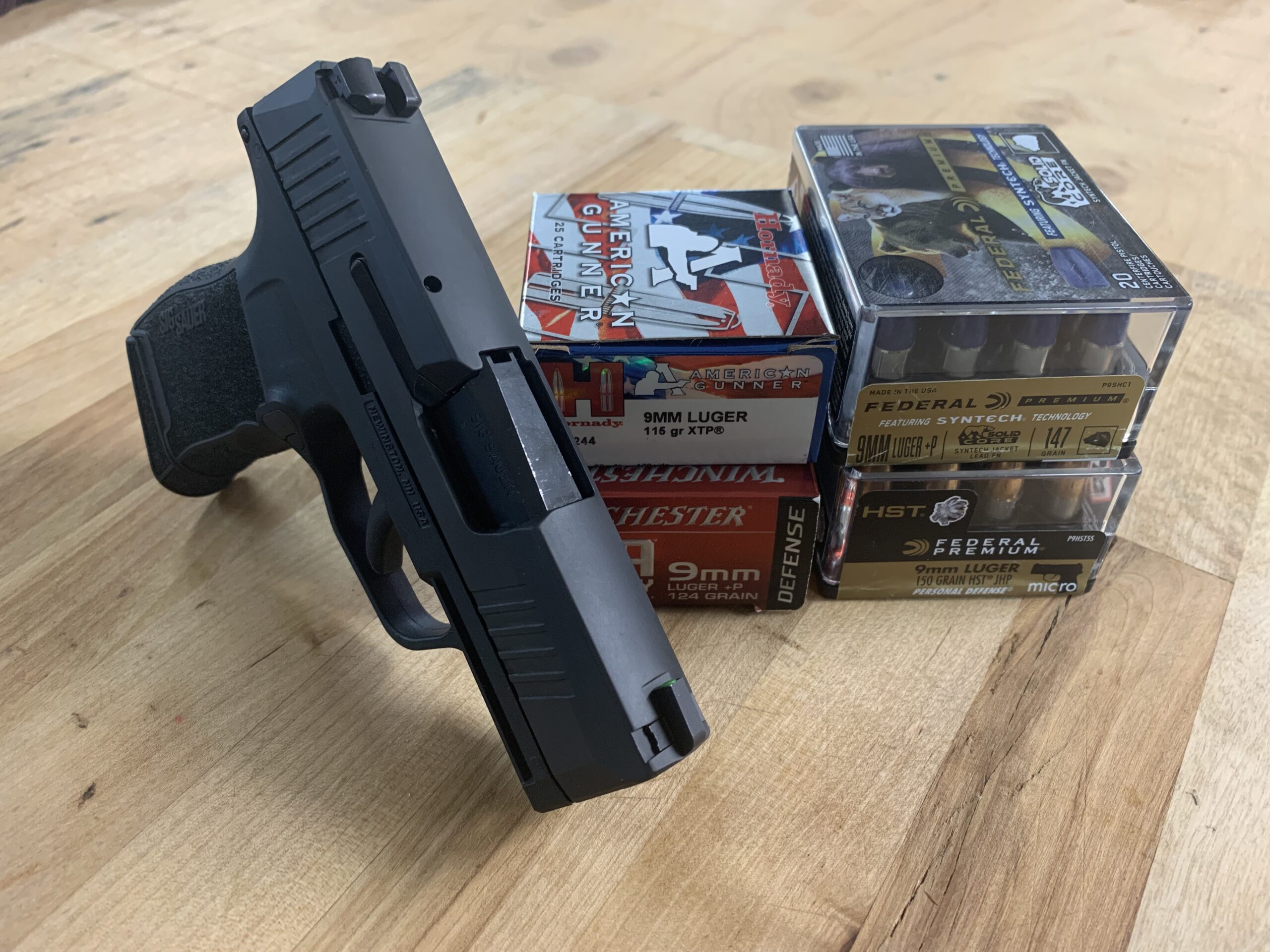
Controlling the Sig Sauer P365
When we talk about how manageable a pistol is, we’re usually referring to how easy it is to combat the recoil and get back on target quickly; or how painful a pistol is to shoot if it’s not very manageable. Of course, this must all be considered on a sliding scale, relative to pistols similar in class and price. Comparing the manageability of the Sig P365 to a full-size Springfield Prodigy doesn’t give us any actionable information.
Comparing the Sig P365 to the Competition
Since the base model Sig P365 was introduced, more micro-compact 9mm’s have come out of the woodwork, and even subsequent P365 models have moved the ball forward. Expertly sorting through the nuances of each pistol’s handling and shooting characteristics could make a sommelier look like a simpleton, but I believe that the base model Sig P365 is still holding its own.
I fired the Sig Sauer P365 alongside my Kimber Micro-9 as a relevant comparison. The Micro-9 series pre-dates the P365 by a few years and is a good representative of the state of the concealed-carry market when the Sig P365 was released.
Not surprisingly, I found the Sig Sauer P365 to have a softer recoil cycle than my Micro-9 1911. The trigger of the hammer-fired Micro 9 was generally better. It has less take-up, something that’s normal for hammer-fired guns compared to striker-fired. However, the P365’s trigger is ok; it breaks clean and has a strong, tactile reset. The slightly fatter-but-shorter (front to back) grip of the P365 allows me to find a rock-solid, repeatable grip that’s better than what my hands can get with the Micro-9 1911.
Among a few others in the wide field of micro-compact 9mm’s, I’d say that the Sig P365 is most similar in feel to the Springfield Hellcat, but the Hellcat is a bit snappier. The Sig P365 is a bit tougher to tame, for me, than the Smith & Wesson CSX, but the trigger has a more consistent and stronger reset, and it’s better in just about every way than the older Kahr micro pistols I’ve fired.
How Accurate is the Sig Sauer P365?
Accuracy and recoil management go together, especially when talking about micro-compact concealed-carry pistols. We don’t expect or need bullseye-match accuracy from our carry guns, but we need to be able to place rounds precisely if a threat presents itself.
I found the practical accuracy of the Sig P365 to be good, and I judged it in a couple ways. First, I fired strings of ten shots at a USPSA/IPSC silhouette target at 50 feet from a supported position. An acceptably accurate micro-compact with decent sights should be able to keep all rounds inside the main A-zone. No sweat there for the Sig P365. Next, I fired magazines two-handed and unsupported, at the same target. I paced shots slow enough to catch the reset and apply careful pressure to the trigger again—about one shot per second. At this pace, I could still generally keep all shots in the A-zone with one or two straying into “C” territory.
Next, I did rapid fire drills at 10, 15, and 20 feet to judge the accuracy I could maintain at normal engagement distances with multiple shots. I fired strings of two, three, four, and five as fast as I could, focusing on center-mass of the USPSA/IPSC targets. At 20 feet, I’d see some strays in the longer strings, but generally, it was easy to keep rounds in the A-zone and do it quickly.
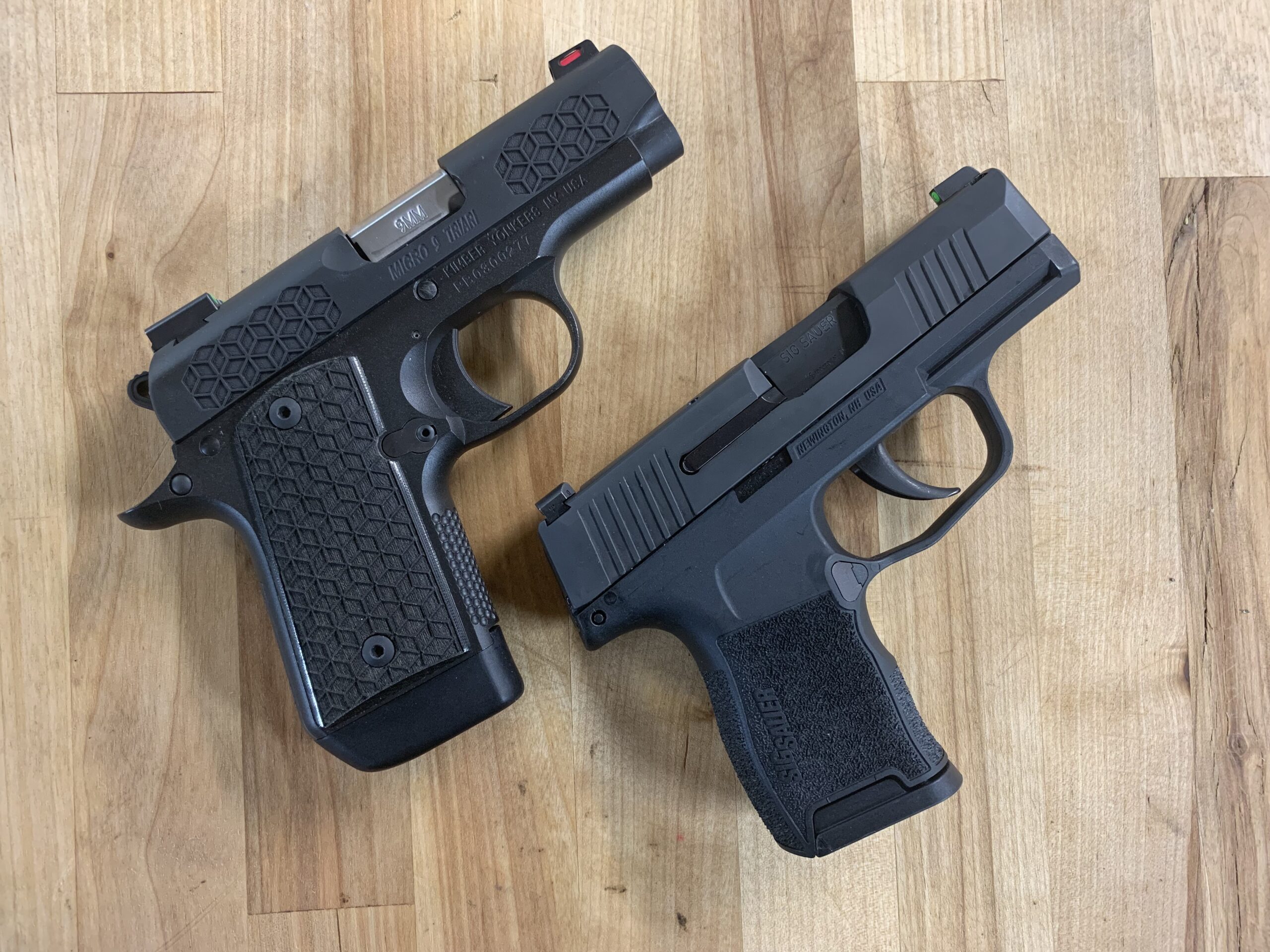
Grip is Everything
Grip is important for shooting any handgun, but fast and accurate shooting is hopeless without a good grip on a micro-compact. A nice thing about the Sig Sauer P365 is the grip shape and texture allow a tight, complete grip. It’s manageable to shoot single-handed but, when you can, squeeze that gun like you’re trying to juice a lemon. Proper distribution of your grip pressure will help keep you on target.
With a tight grip, I don’t perceive any muzzle flip while shooting the Sig P365. The effect of the recoil presents as my sight picture bouncing around the target slightly with each shot. Follow-up shots are fast.
Where the Sig Sauer P365 Excels
The Sig P365 is an excellent all-around concealed-carry pistol. It’s reliable and boasts good capacity, good manageability, and excellent modularity. It’s quickly become one of the best and most popular platforms on the market and the base model comes in at a competitive price.
What the Sig Sauer P365 Could Do Better
Left-handed shooters would probably appreciate the base model Sig P365 more if it came with ambidextrous slide stop levers like the P320.
